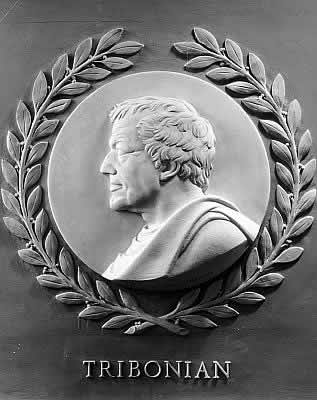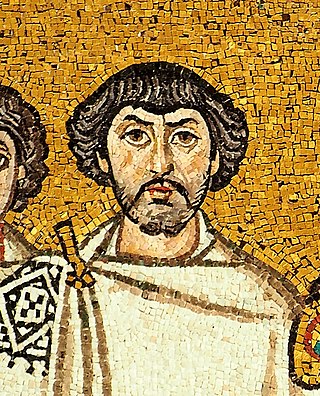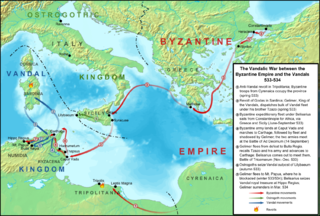Related Research Articles
The 530s decade ran from January 1, 530, to December 31, 539.

Year 537 (DXXXVII) was a common year starting on Thursday of the Julian calendar. At the time, it was known as the Second year after the Consulship of Belisarius. The denomination 537 for this year has been used since the early medieval period, when the Anno Domini calendar era became the prevalent method in Europe for naming years.

Year 530 (DXXX) was a common year starting on Tuesday of the Julian calendar. In the Roman Empire, it was known as the Year of the Consulship of Lampadius and Probus. The denomination 530 for this year has been used since the early medieval period, when the Anno Domini calendar era became the prevalent method in Europe for naming years.
The Battle of Callinicum took place on Easter Saturday, 19 April 531 AD, between an army of the Byzantine Empire under Belisarius and a Sasanian cavalry force commanded by Azarethes. After being defeated at the Battle of Dara, the Sasanians moved to invade Roman Syria in an attempt to turn the tide of the war. Belisarius' rapid response foiled the plan, and his troops pushed the Persians to the Syrian border through maneuvering before forcing a battle in which the Sasanians won a Pyrrhic victory.

The Battle of Dara was fought between the Eastern Roman Empire and the Sasanians in 530 AD. It was one of the battles of the Iberian War.
Azarethes, also recorded as Exarath (Ἑξαράθ) and Zuraq, was a Sassanid Persian military commander during the Byzantine–Sassanid Wars. His Greek name is possibly a misunderstanding of the honorific title hazaraft.

The Battle of Solachon was fought in 586 CE in northern Mesopotamia between the East Roman (Byzantine) forces, led by Philippicus, and the Sassanid Persians under Kardarigan. The engagement was part of the long and inconclusive Byzantine–Sassanid War of 572–591. The Battle of Solachon ended in a major Byzantine victory which improved the Byzantine position in Mesopotamia, but it was not in the end decisive. The war dragged on until 591, when it ended with a negotiated settlement between Maurice and the Persian shah Khosrau II.

The Iberian War was fought from 526 to 532 between the Byzantine Empire and the Sasanian Empire over the eastern Georgian kingdom of Iberia—a Sasanian client state that defected to the Byzantines. Conflict erupted among tensions over tribute and the spice trade.
Sunicas was a Hun who served in the Byzantine military during the Iberian War, in the early reign of Emperor Justinian I.
Sittas was a Byzantine military commander during the reign of Emperor Justinian I. During the Iberian War against the Sassanid Empire, Sittas was given command of forces in Armenia, similar to the status of Belisarius in Mesopotamia. He won a victory over the Sassanids at the battle of Satala.

Belisarius was a military commander of the Byzantine Empire under Emperor Justinian I. Belisarius was instrumental in the reconquest of much of the Mediterranean territory belonging to the former Western Roman Empire, which had been lost less than a century prior. He is considered one of the greatest military commanders in history and the greatest of all Byzantine generals.

John the Armenian was a Byzantine official and military leader of Armenian origin. There is no written account of his physical appearance or confirmation of the year he was born. John served as financial manager of the campaign and was a close friend of Belisarius. He was killed during the Vandalic War in 533. John the Armenian was the linchpin general of the Byzantine army during the Vandalic war.
Bouzes or Buzes was an Eastern Roman general active in the reign of Justinian I in the wars against the Sassanid Persians.
Hermogenes was an Eastern Roman official who served as magister officiorum, military commander and diplomatic envoy during the Iberian War against Sassanid Persia in the early reign of Emperor Justinian I.

The Battle of Thannuris (Tannuris) (or Battle of Mindouos) was fought between the forces of the Eastern Roman Empire under Belisarius and the Persian Sasanian Empire under Xerxes in summer 528, near Dara in northern Mesopotamia.
A siege of Martyropolis occurred in the Autumn of 531 during the Iberian War between the Sasanian Empire under Kavadh I and the Byzantine Empire under Justinian I.
Dorotheus was a Byzantine military commander. While being magister militum per Armeniam he won a battle against the Persians, in 530, as well as taking part in the Battle of Satala. At Satala he defended the city while his superior Sittas was hidden with some cavalry in the nearby area and attacked the Persians in the rear, routing their 30,000 with the Byzantine 15,000. He defeated the Persians again in 531 and later drove the Sabir Huns out through the Caucasus. He was sent to North Africa with Belisarius, but died on the way, which caused mourning throughout the army.
Aigan or Aïgan was a Hun general serving as a cavalry commander for the Byzantine Empire, active in the early 6th century.
Simmas was a Hunnic general in the service of the Byzantine Empire, serving as dux. Active in the early 6th century, he fought at the Battle of Dara, commanding six hundred horseman along with fellow Hun commander Ascan, and played a fundamental role in the Byzantine victory.
Chalazar was a Hun military commander in the Byzantine Empire.
References
- ↑ Malalas, John. "Chronography Bks 1-7, 10-18". Topos Text. Retrieved 25 October 2022.
- ↑ Hodgkin, Thomas (1885). Italy and Her Invaders: The Ostrogothic invasion, 476-535. 1885. Clarendon Press. p. 655. ISBN 9780598984241 . Retrieved 25 October 2022.
- 1 2 3 Baker, George Philip (1931). Justinian The Last Roman Emperor. Cooper Square Press. p. 66. ISBN 9780815412175 . Retrieved 25 October 2022.
- ↑ Kim, Hyun Jin (2013). The Huns, Rome and the Birth of Europe. Cambridge University Press. p. 139. ISBN 9781107009066 . Retrieved 25 October 2022.
- 1 2 Hughes, Ian (2009). Belisarius: The Last Roman General. Pen and Sword. p. 55-59. ISBN 978-1-84468-941-5.